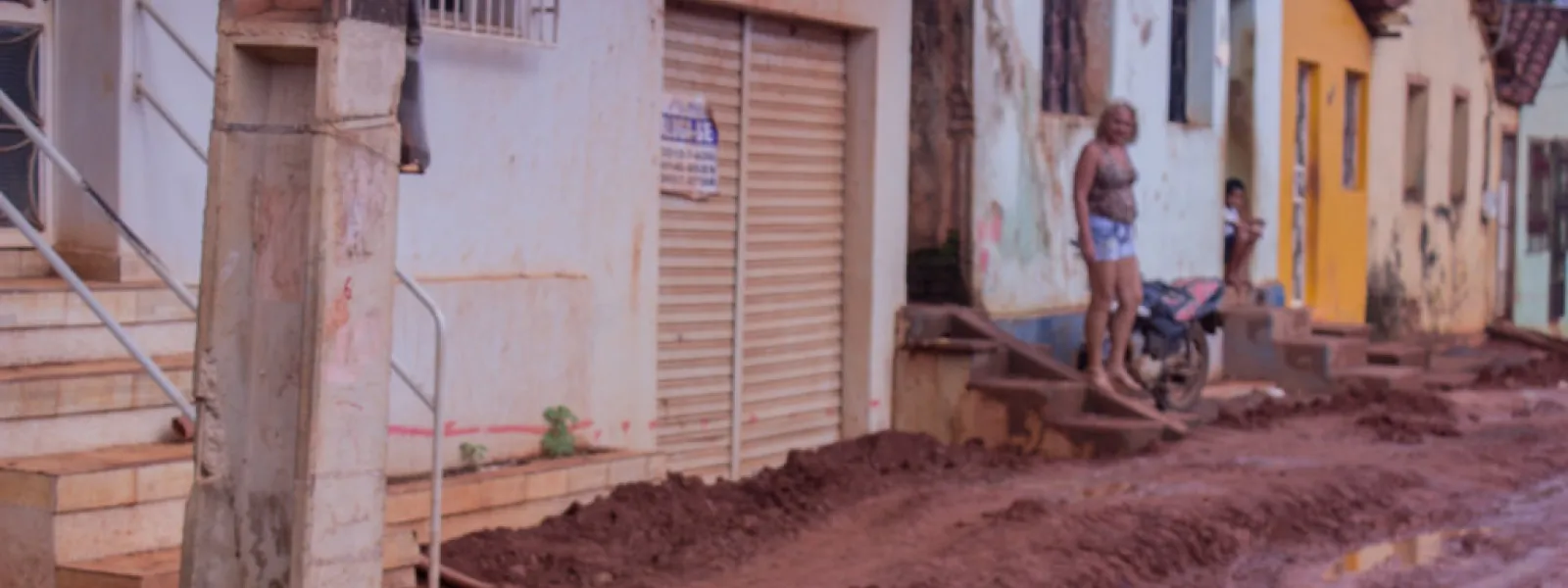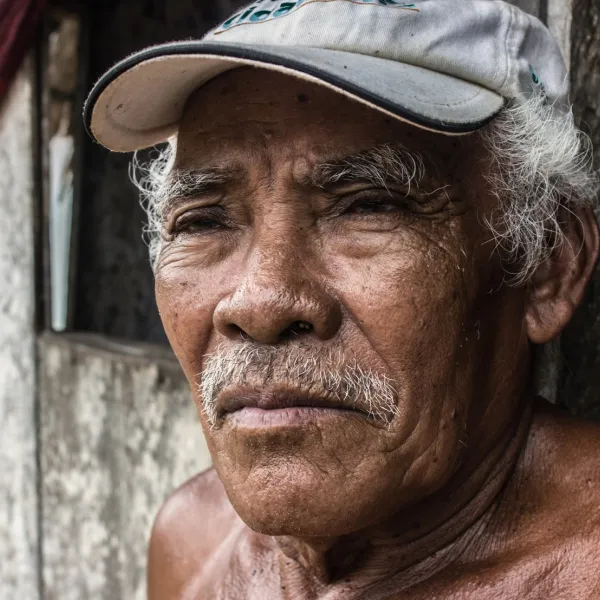
Project
Maíra Irigaray / Amazon WatchFazendo com que o Brasil se responsabilize pelos danos da represa Belo Monte
Quando em pleno funcionamento, Belo Monte será a terceira maior usina hidrelétrica do mundo, construída em um dos ecossistemas mais importantes do planeta: a floresta Amazônica. Localizada no rio Xingu, no Pará, um estado do norte do Brasil, o reservatório cobrirá mais de 500 quilômetros quadrados de florestas e terras agrícolas, uma área do tamanho da cidade de Chicago.
Para a população da Bacia do Xingu, a construção de Belo Monte tem significado a perda do acesso à água, à alimentação, à moradia, ao trabalho e ao transporte. Ao menos 20 mil pessoas serão deslocadas.
O governo e o consórcio encarregado do projeto começaram a construir a usina sem antes consultar primeiro as pessoas da região, muitas das quais são indígenas. Negligenciaram a normativa internacional de direitos humanos, a qual requer o consentimento prévio, livre e informado das comunidade indígenas afetadas. O Brasil também descumpriu as medidas cautelares outorgadas pela Comissão Interamericana de Direitos Humanos, as quais destinavam-se a proteger a vida, saúde e integridade das comunidades.
A represa começou a operar, ainda que não em plena capacidade. Recentemente um tribunal federal suspendeu a Licença de Operação do empreendimento devido à falta de cumprimento, por parte do consórcio, com as obras de saneamento básico em Altamira, cidade diretamente afetada pela hidroelétrica.
Consulta o expediente de fatos do caso
Partners:

Related projects
AIDA Supports Legal Action Against Baba Dam (Spanish Text Only)
Para publicación inmediata Contactos: Astrid Puentes (México) Natalia Landivar (Quito) Monti Aguirre (Berkeley, EEUU) (5255) 55212-0141 (593) 2 22 24 962 (1-510) 848-1155 [email protected] [email protected] [email protected] Organizaciones Internacionales apoyan amparo contra Proyecto Multipropósito Baba ante Tribunal Constitucional de Ecuadorpara proteger derechos humanos y ambiente QUITO, MÉXICO, BERKELEY, 19 DE JUNIO DE 2008-- La Asociación Interamericana para la Defensa del Ambiente (AIDA), presentó un amicus curiae (escrito de amigo de la corte) ante el Tribunal Constitucional de Ecuador, suscrito por International Rivers y FoodFirst Information and Action Network (FIAN) International, apoyando la demanda de Amparo Constitucional interpuesta por afectados del Proyecto Multipropósito Baba. Las organizaciones internacionales argumentaron violaciones a los derechos humanos y al ambiente en la aprobación del proyecto, por lo cual se unen a los demandantes para solicitar la suspensión de su ejecución. “Existen sinnúmero de experiencias donde la implementación inadecuada de mega-represas ha generado daños irreversibles, es necesario aprender de ellas” aseguró Astrid Puentes de AIDA. “La producción de energía no puede implementarse a costa del ambiente y de los derechos humanos, más aún cuando existen alternativas que ni siquiera se han evaluado y que a la larga, podrían evitar mayores costos para los países” puntualizó. El Proyecto Baba, que incluye la construcción de una represa que inundará más de 1,000 hectáreas, fue aprobado por el Ministerio de Medio Ambiente en noviembre de 2006 sin los estudios de impacto ambiental y sociales integrales que se exigen en la legislación nacional e internacionalmente. Estos estudios son de vital importancia, pues el proyecto afectará importantes zonas y tierras de cultivo, impactando seriamente la vida de cientos de personas que dependen de la pesca y la agricultura. Además, se dañará seriamente el hábitat de biodiversidad endémica y en peligro de extinción, como el ave rascón, el venado pequeño y el oso hormiguero de chaleco. “Tenemos la confianza que el Tribunal considerará los estándares internacionales en su decisión” mencionó Monti Aguirre de International Rivers. Dentro de los derechos afectados con este proyecto se incluyen el derecho a la calidad de vida, a la alimentación y a la vivienda, al ambiente sano, al debido proceso y a las garantías judiciales, y a la consulta previa, consagrados en la Constitución Ecuatoriana, en la Convención Americana, el Convenio 169 de la OIT, el Pacto Internacional de Derechos Económicos, Sociales y Culturales y el Protocolo de San Salvador, entre otros. “Buscamos aportar argumentos ante el Tribunal Constitucional evidenciando que la aprobación del proyecto ignora normas internacionales ambientales y de derechos humanos, lo cual puede generar responsabilidad internacional del gobierno ecuatoriano” aseguró Natalia Landivar de FIAN ECUADOR. “Confiamos en que se fallará de acuerdo a las normas” agregó.
Read moreCosta Rican Court Reinforces Protection of Leatherback National Marine Park: Declares Ruling Allowing Construction in Park Unconstitutional
SAN JOSÉ, Costa Rica, June 2, 2008 – On May 23rd, the Constitutional Chamber of the Supreme Court of Justice of Costa Rica repealed a municipal zoning regulation because of its impacts on the most important nesting zone for the leatherback sea turtle in the Eastern Pacific Ocean: the Leatherback National Marine Park (LNMP). The court resolution confirms that the park is necessary to guarantee protection of the leatherback turtle, an internationally declared endangered species, and therefore development within the park must be prevented. The court ruled in favor of the plaintiff, the Leatherback Trust, which filed suit in July 2006 against the zoning regulation for the Cabo Velas district of the city of Santa Cruz in the province of Guanacaste. In filing this suit, the Trust was advised by the Environmental and Natural Resources Law Center (CEDARENA), with the support the Interamerican Association for Environmental Defense (AIDA) regarding applicable aspects of international law. Only two weeks ago, the same court ordered the Ministry of Environment and Energy (MINAE) to begin expropriating private lands inside the park due to the impact of private developments on the leatherback turtles. This decision resulted from a case brought by CEDARENA, AIDA, and the Costa Rican organization, Justice for Nature (JPN). The zoning regulation that the court annulled in the May 23rd ruling allowed the City of Santa Cruz to issue construction permits inside the park, ignoring the serious impacts that such operations can have on leatherback turtles. “As is well known, leatherbacks require special nesting conditions and thus people’s presence and lights from construction operations on nesting beaches seriously impacts the turtles,” declared Mario Boza, biologist for The Leatherback Trust. The LNMP was created to preserve the conditions necessary for the turtles’ reproduction, but the zoning regulation disregarded this intention. “We are very pleased with the court decision in Costa Rica because it sets a precedent that builds hope for the conservation of this species,” declared Astrid Puentes, Legal Director for AIDA. “We hope that this decision will be replicated in other countries in the region,” added Puentes. The court’s decision is retroactive, so it should cancel all the permits granted and constructions operations initiated under the regulation. “With this decision the court is not only protecting Costa Rica’s ecological balance, as established in article 50 of the Costa Rican Constitution, but also ordering the country to comply with its commitments to international agreements,” declared Rolando Castro, a lawyer with CEDARENA. Press Contacts Rolando Castro, Attorney, (506) 283-7080 [email protected] CEDARENA Gladys Martínez, Attorney, AIDA: (506) 283-7080 [email protected]
Read moreDoe Run Smelter in La Oroya, Peru, Loses Environmental Certification
FOR IMMEDIATE PUBLICATION: April 9, 2008 Press Contacts: Perry Gottesfeld, Executive Director OK International 415-362-9898 [email protected] Anna Cederstav, Ph.D. AIDA and Earthjustice 510-550-6700 [email protected] DOE RUN SMELTER IN LA OROYA, PERU, LOSES ENVIRONMENTAL CERTIFICATION Lima, Peru – Doe Run Peru, which operates one of the largest metal-smelters in the hemisphere, has lost its Environmental Certification in a highly unusual move taken by the company’s independent third-party auditors. TUV Rheinland initially granted the certification less than two years ago, but revoked it March 11, 2008 citing non-compliance with Peruvian environmental laws and the lack of adequate pollution prevention measures. The loss of the certification comes on the heels of a $234,000 US fine imposed last year against Doe Run Peru for several serious violations of environmental laws in Peru. This week, Peruvian authorities released a report detailing those violations, including noncompliance with the standards for lead and particulate matter. Doe Run Peru obtained the environmental certification under ISO 14001 in 2006 calling it a “significant milestone in delivering on our commitments to our communities, our employees and the environment." The Doe Run Company’s web site calls the ISO certification an “internationally recognized symbol of a company’s dedication to superior quality, customer satisfaction and continuous improvement.” Nevertheless, a number of studies conducted by the government as well as international health experts have shown that almost all of the children living in the area surrounding Doe Run Peru’s smelter have unacceptably high levels of lead in their bodies. Many are severely exposed and require immediate medical treatment. “TUV Rheinland acted responsibly in taking this unprecedented action to underscore the need for Doe Run Peru to do more to protect public health in La Oroya” said Perry Gottesfeld, Executive Director of Occupational Knowledge International (USA). “Revoking the certification should send a strong message to Doe Run that they have much more work to do,.” said Anna Cederstav, Staff Scientist with AIDA and Earthjustice, and author of the book La Oroya Cannot Wait. “Nevertheless, we are still concerned that, if paid enough, another certifying body will agree to provide Doe Run with a similar certification.” she added. In 2006, several organizations filed a petition with the Inter-American Commission on Human Rights of the Organization of American States, seeking a recommendation that the Peruvian government implement urgent measures to halt the grave violations against the health and lives of the citizens of La Oroya. Last year, the Commission agreed and requested that the state implement such precautionary measures. The World Health Organization (WHO) estimates that 120 million people are overexposed to lead (approximately three times the number infected by HIV/AIDS) and 99 percent of the most severely affected reside in the developing world. Lead affects both children and adults and causes brain damage, metal retardation, and other learning disabilities in children. In addition to lead, the population of La Oroya is also exposed to extreme levels of other harmful contaminants, including arsenic, cadmium, and sulfur dioxide.
Read more